The impact of ABA therapy on academic performance

Understanding ABA and Its Role in Education
Applied Behavior Analysis (ABA) is a well-established method used to support children with autism and other developmental challenges in educational settings. Its application aims to promote positive behaviors, facilitate learning, and foster social and communication skills. This comprehensive approach is grounded in behavior analysis principles, including reinforcement and consistency, which help develop desirable behaviors and generalize skills across different environments. Over recent years, ABA's integration into classroom settings has demonstrated significant benefits in improving academic performance, making it a cornerstone of educational strategies for learners with special needs.
Uses of ABA in Educational Contexts
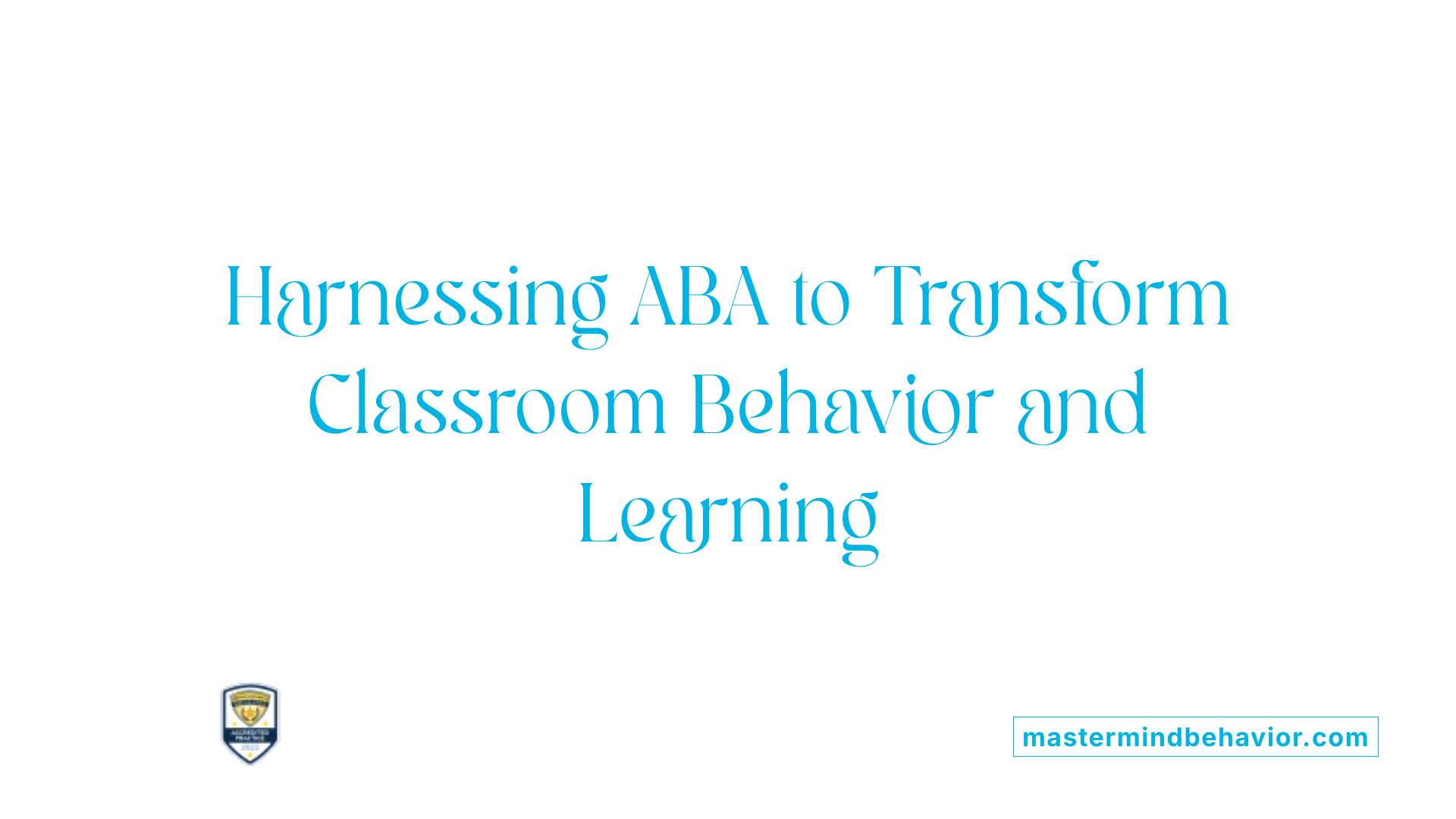
How is ABA used in education?
Applied Behavior Analysis (ABA) plays a pivotal role in classrooms by integrating its principles to foster positive behavioral changes and enhance learning outcomes. Educators and clinicians systematically use evidence-backed techniques like reinforcement and environmental modifications to promote desirable behaviors.
In classroom settings, ABA is tailored to meet individual needs through various strategies such as discrete trial teaching, which provides repeated opportunities for skill practice, and naturalistic teaching, which incorporates learning within everyday activities. Token economies reward students for positive behaviors, encouraging motivation and engagement.
Behavior modification methods focus on understanding the function of behaviors and addressing triggers. This allows for personalized interventions like antecedent manipulations and teaching alternative, functional behaviors. Such approaches help reduce problem behaviors and support social and academic development.
School-based ABA also involves collaboration among teachers, therapists, and parents to ensure interventions align with educational goals and social-emotional growth. This teamwork helps reinforce skills learned at school within the home environment, creating consistency in behavioral support.
Research underscores ABA’s effectiveness, showing improvements across multiple areas including communication, social interaction, attention, and independence. Overall, ABA’s structured, data-driven approach enhances student engagement, supports social inclusion, and cultivates self-regulation, which are crucial for success in and outside the classroom.
Strategies like reinforcement, behavior modification, environmental adjustments
| Strategy | Description | Purpose |
|---|---|---|
| Reinforcement | Providing positive consequences to increase desired behaviors | To motivate students and reinforce learning |
| Behavior modification | Systematic change of environments and routines to shape behavior | To reduce problematic behaviors and promote desired actions |
| Environmental adjustments | Modifying classroom setup, schedules, and cues to support learning and behavior | To create a supportive atmosphere conducive to learning |
These strategies are interconnected and often combined to create an effective, supportive learning environment for students with diverse needs, fostering growth in behavioral, academic, and social areas.
Academic Benefits of ABA Therapy
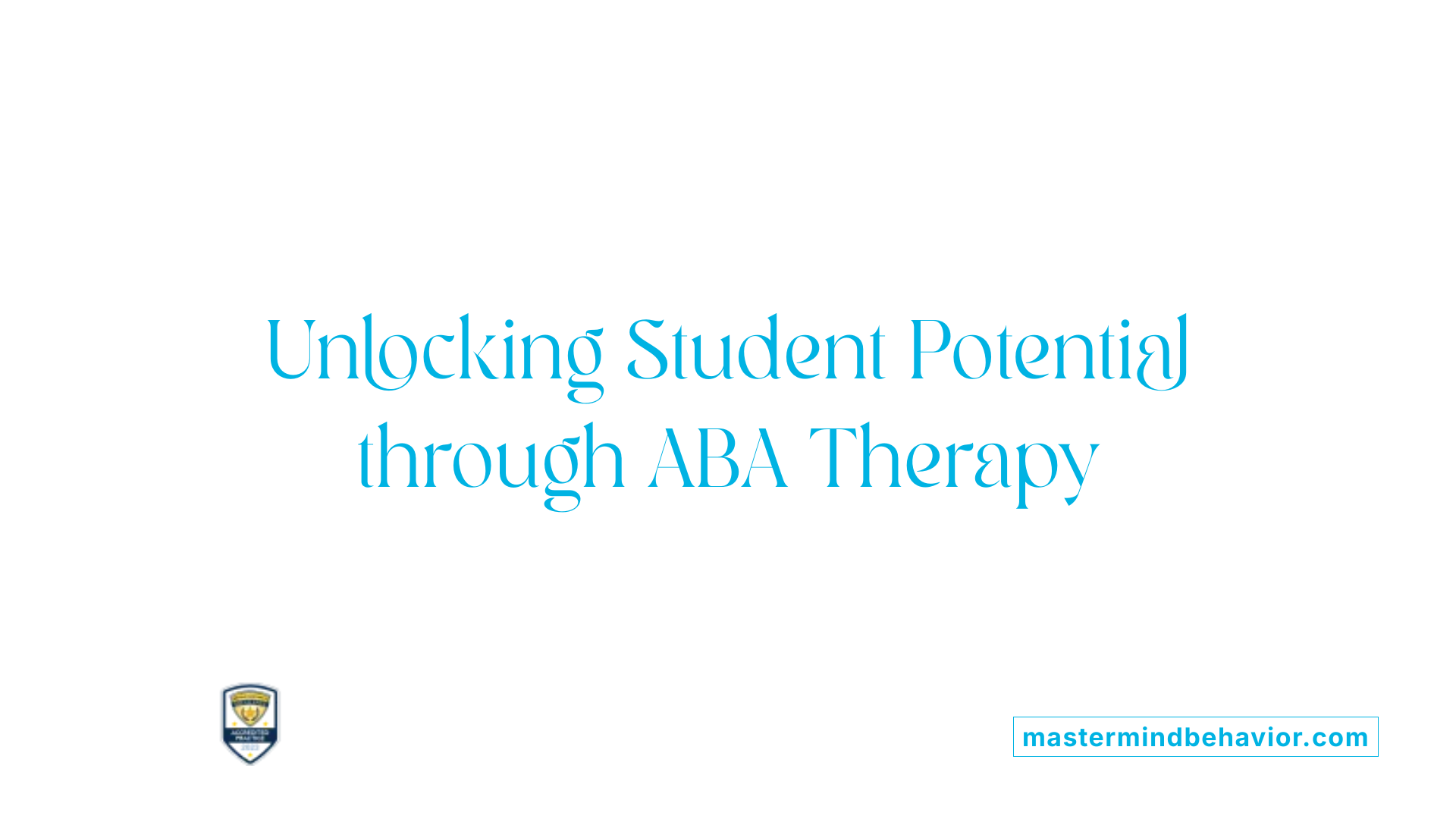
Improvements in communication, social skills, and academic achievement
School-based ABA therapy is designed to promote tangible progress in multiple areas critical for student success. One primary area is communication; children with autism often struggle with initiating conversations and making eye contact. ABA techniques such as prompting, shaping, and reinforcement help children develop these skills, enabling more effective interactions. Social skills are also targeted to improve peer interactions, reduce problem behaviors, and foster inclusive classroom participation.
Furthermore, ABA therapy enhances academic skills by breaking down complex tasks into manageable steps. This structured approach boosts confidence and independence, making students more engaged and capable of completing assignments. Research indicates that students receiving ABA interventions demonstrate notable improvements in school performance, with many showing increased attention, better following instructions, and greater task completion.
Development of independence and self-regulation
A significant focus of ABA therapy is on cultivating independence and emotional regulation. Students learn to manage impulses and make well-informed choices, which are essential for both academic and social development. Through personalized interventions, children acquire life skills such as dressing, grooming, and toileting, reducing reliance on caregivers.
The application of reinforcement principles encourages students to develop self-sufficiency. By consistently practicing appropriate behaviors and managing triggers through functional assessments, ABA therapy helps children stay regulated, especially in challenging situations. These skills not only contribute to immediate classroom success but also support long-term growth and adaptability.
How ABA therapy supports overall educational development
Integrating ABA strategies into classroom settings creates a supportive learning environment that reflects real-life experiences. Collaboration among therapists, educators, and parents ensures that interventions are tailored to individual needs, promoting meaningful progress.
Research reinforces the positive impact of ABA therapy, with most studies showing improvements across a wide range of outcomes, including cognitive, language, and adaptive behaviors. Although not all studies measure quality of life directly, the overarching goal is to maximize students' potential by fostering skills that lead to independent, confident learners capable of navigating both academic challenges and social contexts.
Impact of ABA on Academic Performance
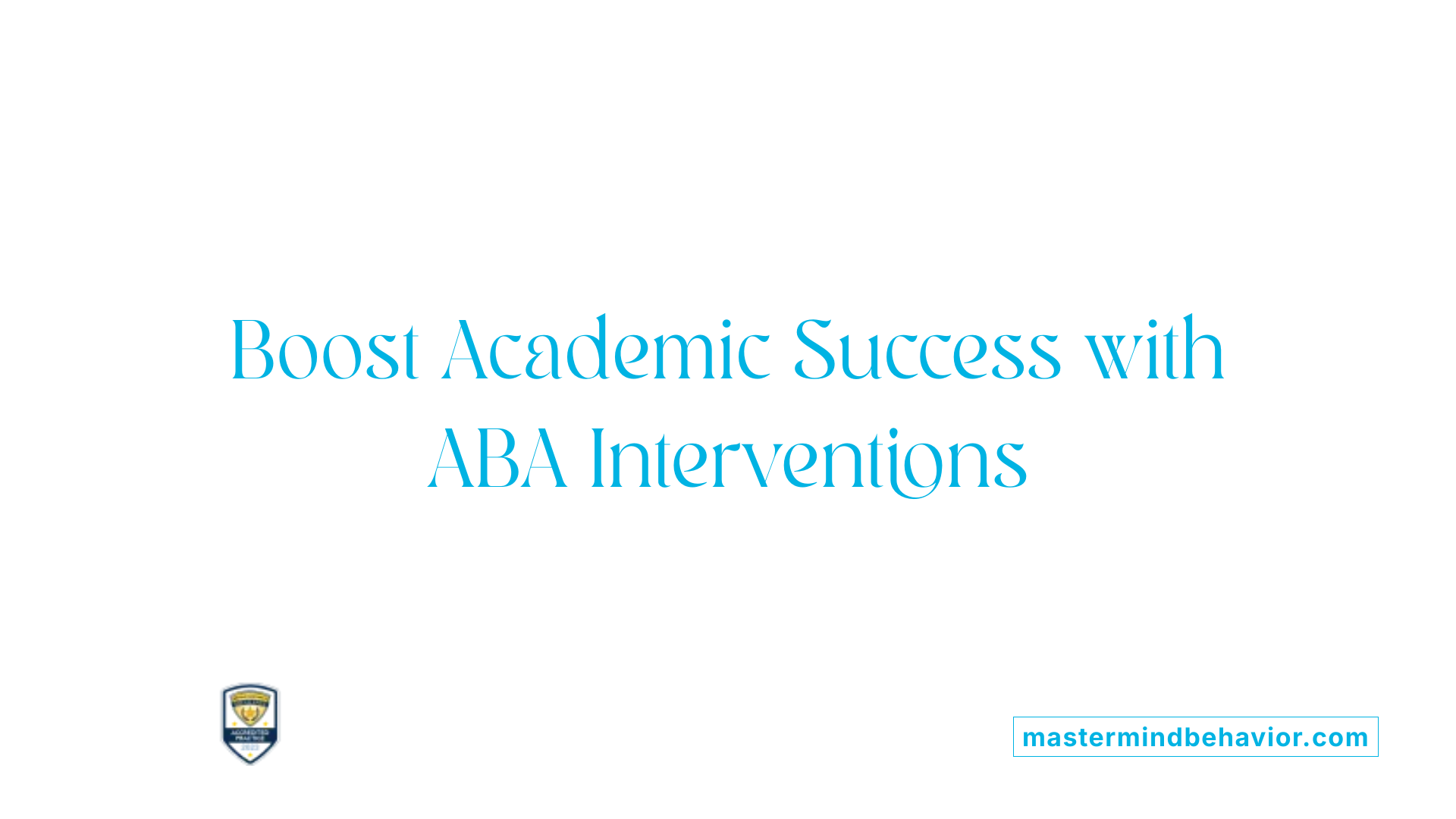
Does ABA help with academic performance?
Applied Behavior Analysis (ABA) therapy has a well-established role in enhancing the academic outcomes of children with autism. By applying behavioral principles such as reinforcement and consistency, ABA programs focus on developing skills like attention, following instructions, and completing tasks. These targeted strategies help students maintain focus and stay engaged during lessons.
One effective approach within ABA is breaking down complex academic tasks into smaller, manageable steps. This method allows children to experience success at each stage, which builds their confidence and encourages a growth mindset. As children master these individual steps, their overall academic skills improve, leading to better performance on assignments and tests.
In addition to academic gains, ABA therapy promotes independence. Students learn to regulate impulses, make appropriate choices, and develop self-control—essential skills for thriving in a structured classroom environment. This combination of academic and social skill development helps children become more self-reliant learners.
Research indicates that school-based ABA interventions produce positive results not only in academic areas but also in social and emotional development. Collaborative efforts among therapists, teachers, and parents ensure that the interventions are tailored to individual needs, leading to more effective learning experiences for students.
In summary, ABA therapy offers substantial benefits in improving academic engagement, task completion, and independence, all of which contribute to enhanced educational success.
School-Based ABA Programs and Collaboration
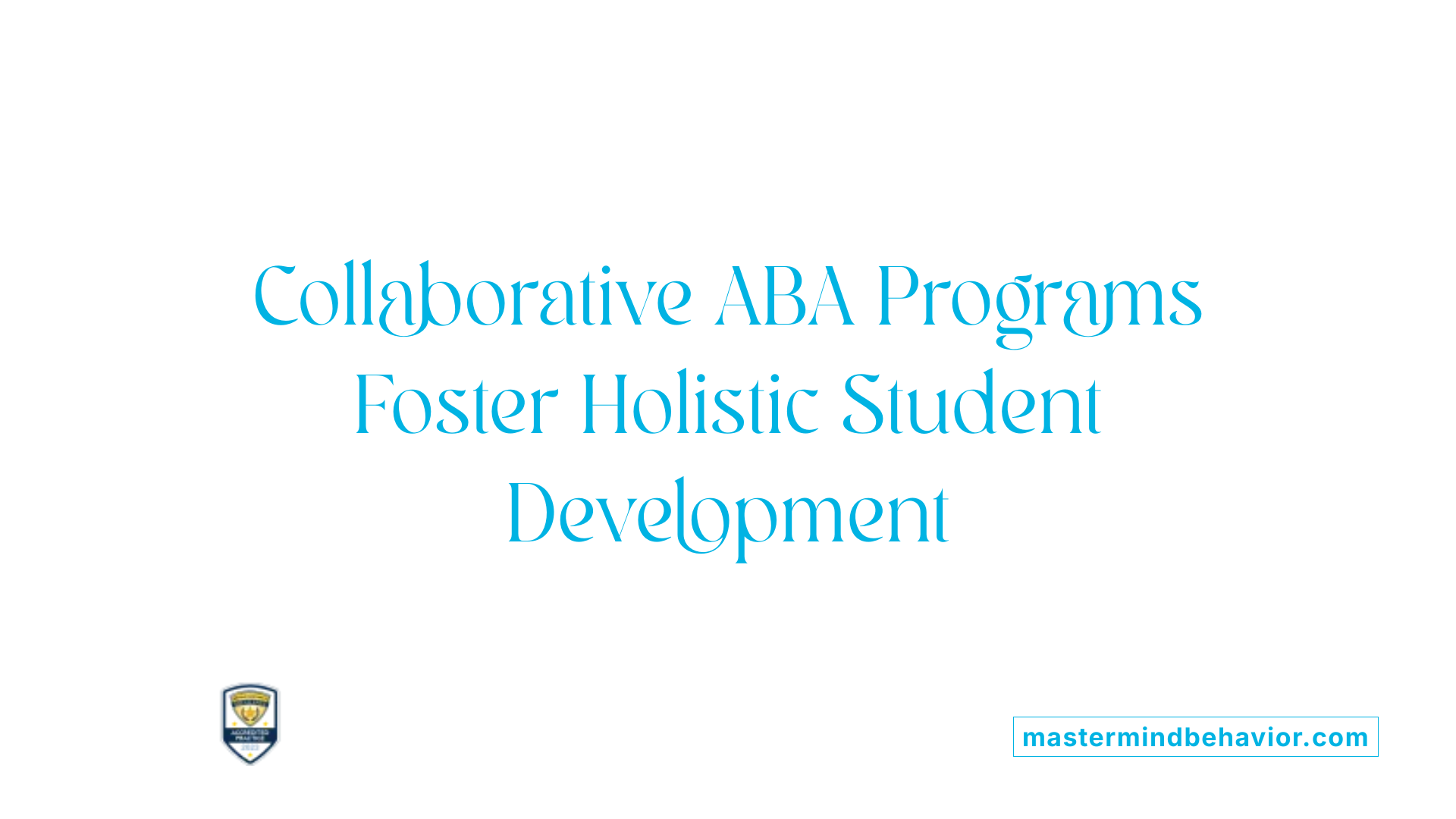
How is ABA used in education?
Applied Behavior Analysis (ABA) is a powerful approach that education professionals use to support students in developing essential skills and reducing challenging behaviors. In classroom settings, ABA techniques are tailored to meet each child's unique needs, helping students engage more effectively and learn more efficiently.
Integration within classroom routines
School-based ABA programs seamlessly incorporate behavior analysis principles into everyday classroom routines. Teachers and therapists work together to modify environments, set clear expectations, and implement reinforcement strategies that promote positive behaviors. This integration helps students build skills like attention, following instructions, and participating in class activities, which are crucial for academic success.
Partnerships with teachers and parents
Collaboration among educators, ABA therapists, and parents is vital for the effectiveness of school-based programs. Regular communication ensures interventions align with classroom goals and are personalized for each student. Teachers are often trained by therapists to reinforce strategies outside therapy sessions, creating a consistent learning environment. Parents are empowered through training to support their child's progress at home, reinforcing positive behaviors and skill development.
Improving social and emotional growth
School-based ABA programs also focus on fostering social skills and emotional regulation. Through targeted interventions, students learn to interact positively with peers, develop self-regulation, and build confidence. This comprehensive support aims to maximize students' academic, social, and emotional potential.
Outcomes and ongoing assessment
Research indicates that students participating in ABA-based programs demonstrate improvements in behavior, social interaction, and academic performance. Continuous assessment allows for adjustments to interventions, ensuring they remain effective and relevant to each child's evolving needs.
| Aspect | Details | Additional Notes |
|---|---|---|
| Integration | Embedding ABA strategies into daily routines | Supports skill generalization |
| Collaboration | Teachers, therapists, and parents working together | Ensures consistency and personalization |
| Focus Areas | Academic skills, social skills, self-regulation | Promotes overall student growth |
| Outcomes | Improved engagement, behavior, communication | Evidence supports effectiveness |
In essence, school-based ABA programs aim to create inclusive, supportive classrooms where children with diverse needs can thrive academically, socially, and emotionally.
Developing Social and Communication Skills
How does ABA therapy enhance peer interactions?
School-based ABA therapy plays a crucial role in improving social skills among students with autism or other developmental delays. By focusing on developing positive peer interactions, ABA helps children learn how to initiate conversations, share ideas, and respond appropriately in social settings. These improvements foster a more inclusive classroom environment where students can build meaningful relationships and participate actively in group activities.
Moreover, ABA interventions often involve social skills training modules that incorporate peer modeling and group activities. This structured approach encourages students to generalize social behaviors across different settings, making social integration smoother and more natural.
How are prompting, shaping, and reinforcement used to develop these skills?
ABA therapy utilizes techniques such as prompting, shaping, and reinforcement to effectively teach communication and social skills. Prompting involves providing cues or hints to encourage desired responses, gradually fading these prompts as the student becomes more independent.
Shaping refers to reinforcing successive approximations of a target behavior. For instance, if a child is learning to initiate a conversation, reinforcement might initially be given for any speech attempt, then only for more appropriate or longer interactions as progress is made.
Reinforcement, whether positive or negative, is used to increase the likelihood of desired behaviors. For example, a child may receive praise or a preferred activity when they make eye contact or respond to a peer, encouraging continued use of these skills.
These methods are tailored to each child's needs, providing a supportive framework that promotes consistent growth in social and communication abilities.
Education benefits of ABA therapy
ABA therapy delivers significant educational advantages, particularly for children on the autism spectrum. It enhances language skills, social interactions, and academic performance through individualized strategies. Early intervention, often commencing as young as 12 to 18 months, has been shown to improve developmental outcomes, reduce problematic behaviors, and foster emotional regulation.
By breaking down complex skills into manageable steps, ABA helps children build confidence and develop a growth mindset. Additionally, collaboration between therapists, teachers, and parents ensures that interventions are aligned with classroom objectives and tailored to the child's unique needs. Ultimately, school-based ABA supports students in reaching their full potential—academically, socially, and emotionally—laying a strong foundation for lifelong success.
| Focus Area | Techniques Used | Outcomes Achieved |
|---|---|---|
| Peer interactions | Peer modeling, social skills training | Improved communication, social comfort, peer bonding |
| Communication skills | Prompting, shaping, reinforcement | Eye contact, initiation of conversations, responses |
| Academic skills | Task analysis, positive reinforcement | Enhanced attention, instruction-following, independence |
| Daily living skills | Functional behavior assessments, life skills | Increased independence in dressing, grooming, toileting |
This comprehensive approach ensures that students not only acquire skills but also generalize these across settings, leading to more meaningful social participation and academic success.
Behavior Management and Individualized Strategies
How is ABA used in education?
Applied Behavior Analysis (ABA) is a powerful tool in educational settings, supporting students in developing essential skills for academic success and social integration. It focuses on understanding the functions of behaviors—whether they are for gaining attention, escaping tasks, or seeking sensory input—and uses this insight to craft targeted interventions.
In schools, ABA techniques help modify problematic behaviors and strengthen positive behaviors. Educators and therapists employ a variety of strategies such as reinforcement, prompting, shaping, and environmental adjustments. For example, they might use token economies to motivate students or implement discrete trial training to teach specific skills.
Tailoring interventions is central to effective ABA practice. This involves close collaboration among therapists, teachers, and parents to create personalized plans that meet each child's unique needs. Such plans often include setting clear goals, breaking tasks into manageable steps, and using visual supports or schedules.
Addressing behavioral triggers is crucial. Functional behavior assessments help identify what causes certain behaviors, enabling the development of strategies that modify antecedents or introduce replacement behaviors. For example, if a student acts out when overwhelmed, the intervention might include calming routines or alternative ways to communicate needs.
School-based ABA applications not only improve academic performance but also enhance social skills and emotional regulation. They promote inclusive environments by helping students with special needs connect with peers and participate meaningfully in classroom activities.
Research shows that these personalized approaches lead to positive changes across multiple domains, including language, adaptive behavior, and overall engagement. The consistent use of reinforcement and behavioral principles fosters skill generalization, helping students succeed in diverse settings.
| Focus Area | Techniques Used | Outcomes |
|---|---|---|
| Behavioral Improvement | Reinforcement, prompting, shaping | Reduced problem behaviors, increased desired behaviors |
| Skill Acquisition | Discrete trial training, naturalistic teaching | Enhanced communication, social skills |
| Social Skills | Peer modeling, role-playing, social stories | Better peer interactions, inclusion |
| Emotional Regulation | Calm routines, self-monitoring tools | Increased self-control and independence |
| Independence Skills | Teaching self-care, daily living tasks | Greater self-sufficiency |
Effort in customizing ABA strategies ensures that each student receives support tailored to their specific behavioral functions, fostering meaningful growth and development in both academic and social realms.
Fostering Independence and Life Skills
What are the educational benefits of ABA therapy?
ABA therapy significantly enhances educational outcomes for children with autism spectrum disorder (ASD). It is a highly individualized, evidence-based approach that centers on improving communication, social interaction, and academic skills. Through techniques such as positive reinforcement, visual supports, and engaging tasks, ABA helps children learn to express themselves, understand social cues, and build meaningful relationships.
A key focus of ABA is teaching essential life skills, including dressing, grooming, toileting, and meal preparation. These skills foster self-sufficiency, allowing children to manage daily activities more independently. Early intervention, often from as young as 12 to 18 months, maximizes developmental progress and can reduce challenging behaviors.
Moreover, ABA supports emotional regulation, helps children navigate social environments, and prepares them for real-world challenges. By breaking down complex tasks into manageable steps, ABA boosts confidence and motivates children to continue learning.
Overall, ABA therapy empowers children to reach their full potential. It promotes not just academic success but also social adaptability and independence, laying a solid foundation for lifelong skills and societal integration.
How does ABA promote self-sufficiency?
Fostering independence is a core goal of ABA therapy. Skilled therapists tailor interventions to each child's needs, teaching practical skills that encourage self-reliance. For example, children learn to dress themselves, groom appropriately, use the toilet independently, and prepare simple meals. These skills reduce reliance on caregivers and increase confidence.
Therapists also work on self-regulation strategies, helping children manage impulses and make good choices. By reinforcing positive behaviors and minimizing problematic ones, ABA creates a structured environment where children can practice and master these skills.
Family involvement is crucial. Parents receive training to support their child's progress at home, creating consistency across settings. This ongoing support reinforces learned skills and promotes generalization, ensuring that independence extends beyond therapy sessions.
In place of dependence, children develop autonomy, which benefits their emotional well-being and fosters a sense of achievement. The ultimate aim is to prepare children for successful, independent adult lives, whether it’s through daily self-care tasks or broader life skills.
Principles and Ethical Considerations
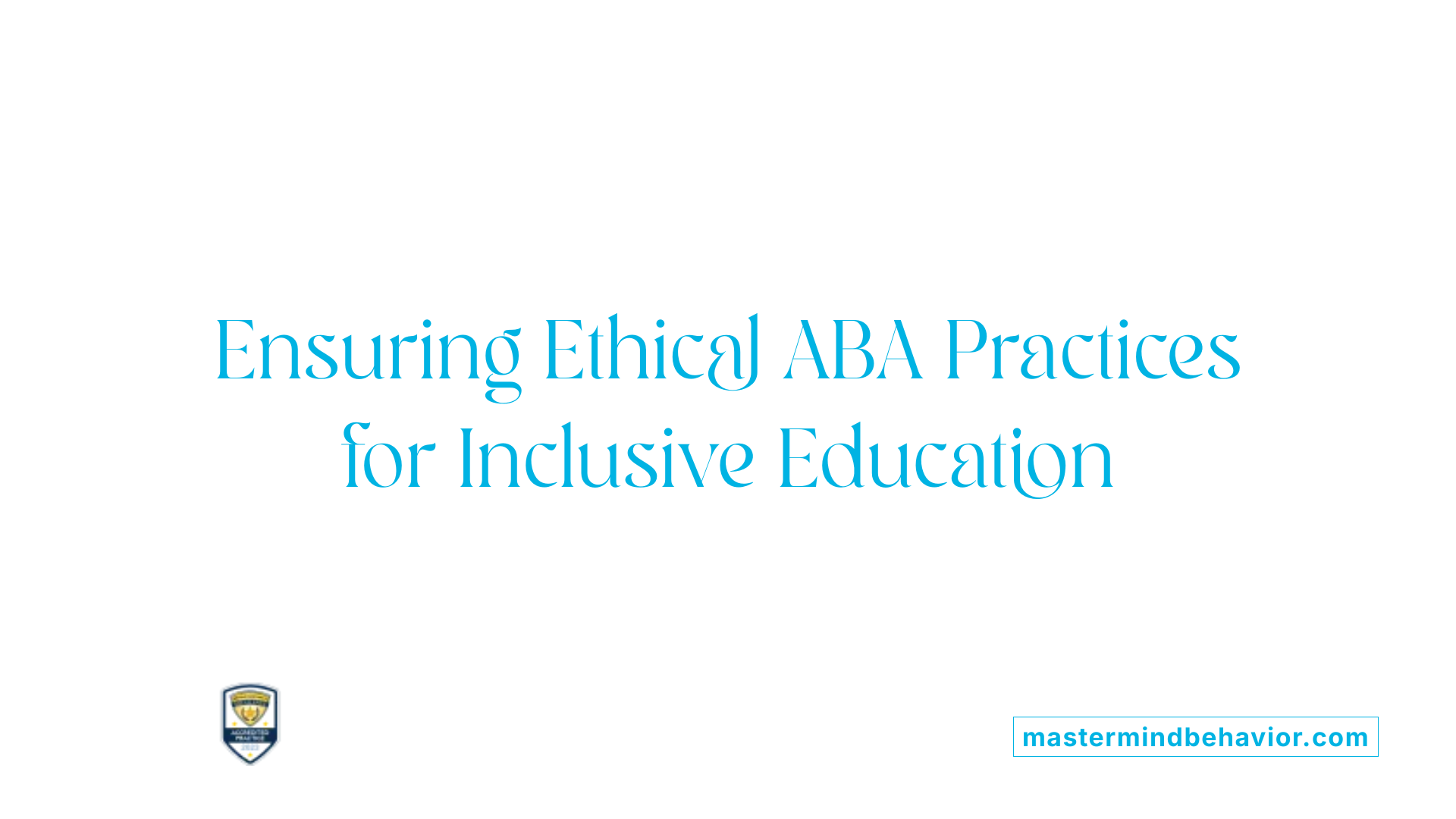
How is ABA used in education?
Applied Behavior Analysis (ABA) is a recognized approach in educational settings aimed at promoting positive, socially meaningful behaviors and skill development. Educators and therapists utilize evidence-based strategies such as reinforcement, behavior modification, and environment adjustments to encourage desirable behaviors and minimize problematic ones.
In schools, ABA techniques include methods like discrete trial teaching, naturalistic teaching, and pivotal response treatment. These approaches are systematically tailored to meet individual student needs, fostering skills related to communication, social interaction, and academic learning.
For example, reinforcement strategies are used to increase engagement and task completion, while prompting and shaping support skill acquisition. Token economies and contingent observation are other tools employed to motivate students and reinforce positive behaviors.
This approach is adaptable for diverse learner populations, including children with autism spectrum disorder, ADHD, traumatic brain injuries, and other developmental challenges. The ultimate goal in educational ABA is to enhance student participation, independence, and overall functioning.
Students benefit from a structured environment where behavior analysis principles are applied consistently. This consistency helps in skill generalization across settings and encourages long-term positive outcomes.
Effective ABA implementation in schools often involves collaboration among teachers, therapists, and parents. This teamwork ensures interventions are personalized, ethical, and aligned with each student’s unique needs, supporting their academic, social, and emotional growth.
Ethical application of ABA
When applying ABA in educational contexts, ethical considerations are crucial. Practitioners must prioritize the well-being, dignity, and rights of students by using interventions grounded in scientific evidence and tailored appropriately.
Respect for individual differences and cultural backgrounds guides the development of interventions, avoiding any forms of punishment or control that could harm the student.
Transparency and informed consent with families, along with ongoing monitoring of intervention impacts, are fundamental ethical practices. Ensuring that interventions are not only effective but also respectful maintains trust and upholds professional standards.
In summary, ABA in education is a powerful tool that, when used ethically, can significantly improve learners’ skills and quality of life, fostering inclusive environments where all students can thrive.
Research Evidence Supporting ABA's Effectiveness
Recent research underscores the positive impact of ABA therapy across various developmental domains for children with autism. Studies show that ABA interventions lead to improvements in seven out of eight measured outcomes, including cognitive, language, social skills, and adaptive behaviors. Most studies report that between 63% and 88% of cases experience meaningful progress, highlighting the therapy's broad benefits.
The outcomes enhanced by ABA encompass a range of areas critical to overall development. These include communication abilities, social interactions, behavior regulation, and emotional well-being. Although the evidence so far indicates substantial benefits, the research reviews noted that no studies explicitly measured quality of life improvements, suggesting an area for future investigation.
In the context of school-based programs, ABA techniques are applied directly within the classroom to promote learning and social integration. These interventions help students become more independent, participate actively, and develop crucial life skills such as dressing, grooming, and toileting. The collaborative approach involving teachers, therapists, and parents ensures that interventions are personalized to meet each child's unique needs.
What Outcomes Does ABA Improve?
| Outcome Area | Improvements Observed | Additional Notes |
|---|---|---|
| Cognitive Skills | Yes | Enhances reasoning, problem-solving, and learning abilities |
| Language Skills | Yes | Promotes eye contact, conversation initiation, and appropriate responses |
| Social Skills | Yes | Strengthens peer interactions and reduces problem behaviors |
| Adaptive Behavior | Yes | Fosters independence in daily living skills |
| Emotional Behavior | Yes | Helps manage impulses and reduce maladaptive behaviors |
| Autism Symptoms | Yes | Addresses core features improving overall functioning |
| Quality of Life | No Data | Currently lacking direct measurement in existing studies |
Does ABA help with academic performance?
ABA therapy significantly improves academic performance and social skills in children with autism by applying targeted interventions and customized strategies. It develops crucial skills such as attention to tasks, following instructions, and completing assignments. Breaking down complex tasks into manageable steps allows children to experience success, build confidence, and develop a growth mindset. These improvements not only boost academic achievement but also foster independence. Students learn to manage impulses, make better choices, and develop self-regulation skills—all of which are vital for success within academic environments and beyond.
The structured approach of school-based ABA offers a supportive environment that reflects real-life school experiences. It encourages inclusivity, peer engagement, and lifelong skill development. By addressing behavioral challenges early, ABA helps students reach their full academic and social potential, paving the way for more autonomous and fulfilling lives.
Maximizing Potential through Consistent ABA Interventions
The evidence demonstrates that ABA therapy, especially when implemented within school settings, plays a vital role in improving academic, social, and emotional outcomes for children with autism spectrum disorder. Its evidence-based strategies foster skill development, behavioral improvements, and independence, leading to better educational success and enhanced quality of life. Collaboration among therapists, educators, and families is crucial to tailor interventions effectively. As research continues to support ABA's benefits, schools are increasingly adopting this approach to create inclusive, supportive environments where all children have the opportunity to thrive academically and socially.
References
- Improving Academic Performance with ABA Therapy in Atlanta
- 5 Benefits of ABA Therapy for Autistic Child
- Applied Behavior Analysis in Children and Youth with Autism ...
- Impact of School-Based ABA Therapy on Student Development
- How to Use ABA in the Classroom
- Is ABA Therapy Only for Autism? - Applied Behavior Analysis Degrees
- 7 Best Applied Behavior Analysis Books
- 5 Applied Behavior Analysis Techniques to Unlock Student Potential ...
- 6 Life-Changing Benefits of ABA Therapy for Children with Autism
Recent articles

How to Navigate Autism Laws and Legal Support Services In NJ And GA
Comprehensive Legal Frameworks Supporting Autism Therapy in NJ and GA

How ABA Therapy Improves Adaptation To New School Environments
Supporting Children with Autism Transitioning into School through ABA Therapy

Strategies For Building Peer Relationships Through ABA Social Skills Training
Building Meaningful Peer Connections with ABA-Based Social Skills Training

How ABA Therapy Improves Communication With Teachers And Peers
Empowering Social Connections: The Role of ABA Therapy in Autism

How ABA Therapy Encourages Teamwork And Cooperation Skills
Unlocking Social Success: The Role of ABA Therapy in Fostering Teamwork and Cooperation

Teaching Coping Skills For Test Anxiety Through ABA Therapy
Harnessing ABA Therapy to Equip Children with Autism Against Test Anxiety



